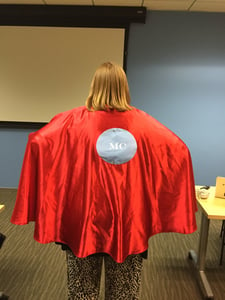
Today's post is the fourth in our "Tips for Enhancing Your Training Skills" blog series. In these posts, we will delve deeply into the fundamentals of essential training skills. This blog series, filled with tips from our training team’s collective years of experience delivering CLASS observation trainings to diverse audiences from around the country and the globe, will provide you with tangible ideas about how to be a more successful trainer.
I have done a lot of CLASS trainings over the years; and I do mean a lot! One of the key things I have learned is how important it is to defend the master codes for the trainings videos. Below are a few of my suggestions for other Affiliate Trainers:
Before the Training
- First, review the master code justifications and find the passages in the manual that help support the master codes. I write those page numbers as well direct quotes from the manual that support the master codes. That way, if someone says that they do not understand why a dimension was coded the way it was, I can quickly find the passage in the manual and draw it to their attention to assist in their understanding.
- Review the videos to identify additional examples of interactions that aren’t mentioned in the master code justifications. There is so much going on in each training clip that the justifications can’t mention each and every interaction. Writing down additional supporting evidence can really help with the video discussion.
During the Training
- As I introduce each dimension during the training, I ask participants to highlight key words in the definition that stand out to them. As we discuss the different indicators, I have them review critical passages in the high range descriptive pages to reinforce what we are talking about. I also make sure that they look at the footnotes. The CLASS doesn’t have that many footnotes, so I know they’re important.
- As we discuss the training clips, I take participants back to the language in the manual and explain that what we just saw was a great illustration of a specific indicator or even behavioral marker. For example, if one of my participant says that they did not see evidence of clarity of learning objectives at the sand table, I would ask what the the teacher was doing. When someone says that she asked lots of question about scooping the sand, measuring the sand, and predicting which containers would hold more sand, I would ask them turn to the high range description of this indicator which states that the teacher keeps her questions clear and targeted on the learning objectives.
- Finally, I make sure to read the summary statements to make sure that everyone understands how the master coding team arrived at the code. I draw my participants back to our discussion to further illustrate the evidence.
And if none of these strategies work, I pull out my special superhero master-coding cape. It works every time!
Do you have any tips on how trainers can defend the master code? We'd love to hear them.

